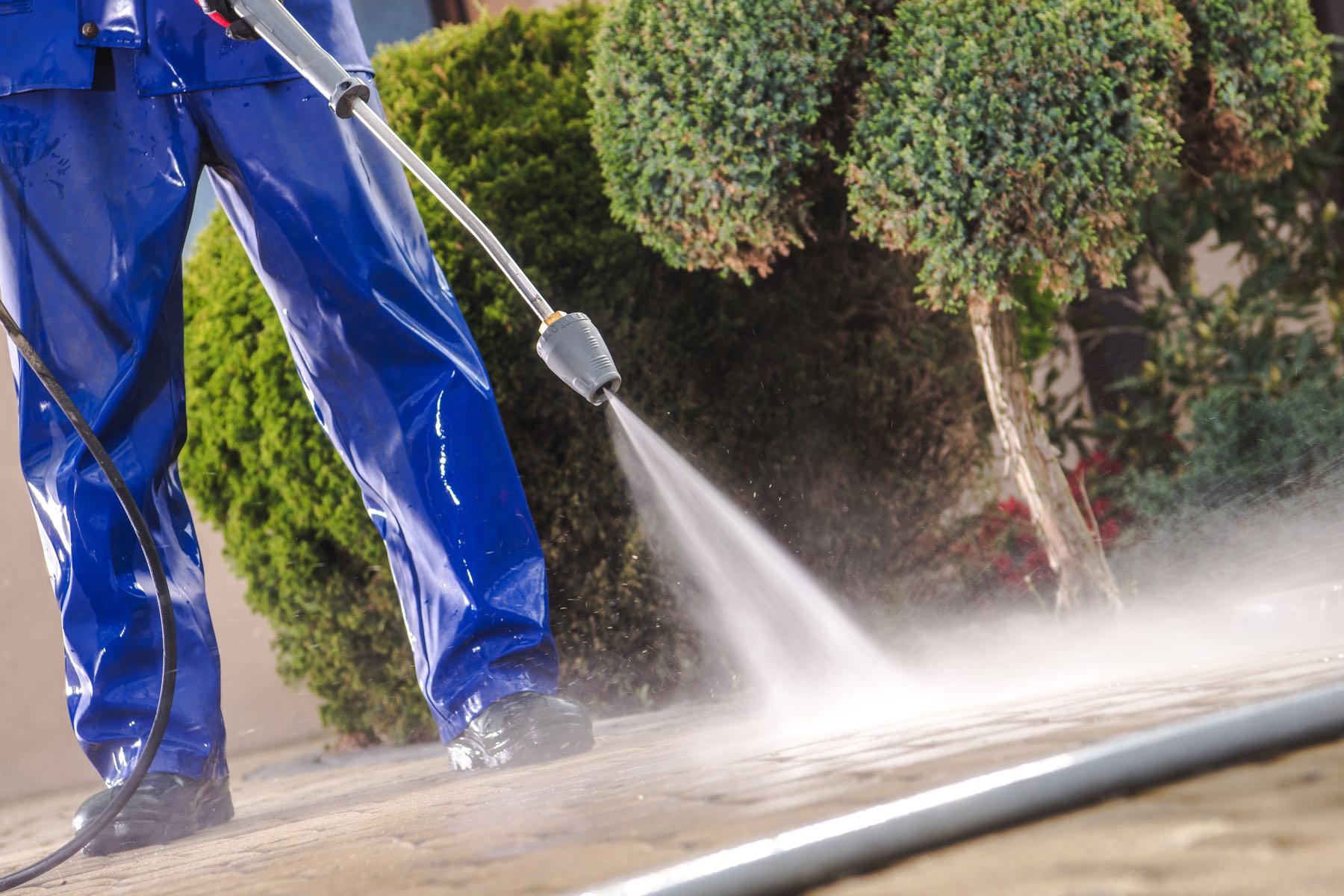As a commercial property manager or owner, you understand that buildings can get grimy and dirty overtime. Whether it’s from standard foot traffic, harsh climate and storms, or even human factors such as graffiti, regularly power washing a building’s outdoor areas maintains its value and can keep it looking clean and inviting for your patrons.
First Off, What’s the Difference Between Soft, Pressure and Power Washing?
It’s important to learn the difference between power washing, pressure washing and soft washing before we dive into a recommended schedule. Even the Wikipedia page on pressure washing is currently inaccurate.
Soft Washing
With soft washing, a cleaning detergent is applied with a pressure similar to a standard garden hose or showerhead. Areas typically cleaned with soft washing include the roof and any fragile surfaces. Since only soft pressure is used, this method does not create much friction and will not get rid of any caked-on dirt and grime.
Pressure Washing
The big difference between pressure and power washing is the type of nozzle used. Since a pressure washer only has one tip on the nozzle, the water is sprayed forcefully at an incredibly high pressure and allows the technician to easily flush out debris. The main issue with pressure washing is the limitation in choosing the amount of pressure, which can easily damage some surfaces.
Power Washing
When it comes to cleaning the exterior of any building or facility, power washing is the safest and most effective method because it takes the best qualities from pressure washing (high pressure) and soft washing (low pressure). Since power washing equipment is expensive and can be complicated to operate and maintain, hiring a professional outdoor power washing service is recommended.
Unlike the pressure washer, the power washer nozzle is equipped with multiple tips which allows the technician to choose which pressure is appropriate. The power washer also utilizes heated water, which is more effective at killing any bacteria in mold and mildew.
Because the power washer uses heat and temperature control, the technician is able to manage how much water pressure is needed to get the job done, typically with a chemical-free wash. This eliminates any potential environmental harm such as seeping into the ground a circulating back into the water supply or damaging any landscaping around your property.
Benefits of Power Washing
As we previously discussed on the Halo blog, power washing can positive affect your consumers’ impressions of your property, well before they even walk through the front door. Whether it’s drive-thrus, sidewalks, parking lots, roofs, building entrances or dumpster areas, keep these areas clean and free from debris and stains paints a picture of professionalism.
Additionally, regularly power washing your commercial property has a host of benefits outside of boosting curb appeal, including:
- Cutting down the cost of repairs by reducing corrosion, rot or decay from elements like dirt, mildew or even bird droppings.
- Removing overgrowth and damage caused by moss and algae found in the damp, shady areas of your building.
- Reducing the number of potentially toxic safety threats that enter it, especially for buildings in industrial areas.
Halo-Recommended Outdoor Power Washing Schedule
While a power washing specialist can recommend the best schedule cleaning schedule based on the needs of your commercial building, it’s typically recommended to stick to the following guidelines.
Seasonally
As the seasons change, it’s a good idea to schedule outdoor power washing services to keep your property looking attractive. Additionally, between the accumulation of leaves and dust in the fall and pollen in the spring and summer seasons, these allergens can do a number on guests and employees with allergies.
Routine Maintenance
As a general rule, an office building should have its exterior, entrances, sidewalks, parking lots and dumpster areas power washed at least twice a year to limit the buildup of dirt, grease and the seasonal elements mentioned above. If a facility sees a good amount of vehicle or foot traffic, such as restaurants or medical buildings, a more tailored and frequent schedule may be needed. Keep in mind, if your facility is close to construction or located in an industrial area, more dust and debris is generated, and warrants added cleanings.
Post Major Storms
After a high-powered storm, it’s common to call a roofing company to repair roof damage or an HVAC repairman to fix any air conditioner issues. Consider adding a professional power washing service to your list of post-storm repairs. Between plant, foliage, leaves, dirt, grime and other debris that is whipped up onto your building during a storm, major damage can occur from a major weather event.
For all these reasons (and more), properly cleaning the exterior of your building or facility requires specific knowledge and expertise. A professional outdoor power washing company like Halo Restoration Services can help. Additionally, keep the interior of your building clean and inviting by hiring a nightly janitorial cleaning service.




